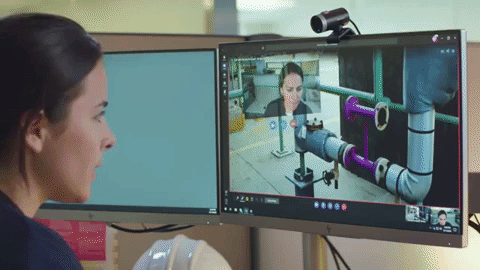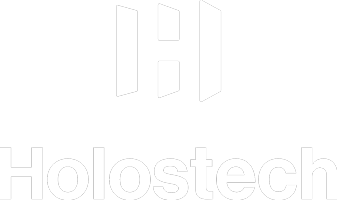Augmented reality is a technology that allows virtual elements to be superimposed on our view of reality, enriching the environment with relevant information.
With the unstoppable rise of the remote work philosophy, new ways of performing tasks that previously had to be carried out on-site are emerging. These changes are appearing in various professional scenarios, such as the industrial or educational sectors.
When we talk about digital applications for this new way of working, we find technologies like augmented reality, which enables activities such as remote assistance.
In industries, maintenance and operations are the areas where this technology finds the most application, allowing remote specialists to connect with operational resources to assist and solve problems in real time.
What are the benefits of remote assistance with augmented reality?
Immediacy: Remote assistance allows an expert located anywhere in the world to communicate directly with the work area. This makes it possible to solve problems immediately with audiovisual instructions. For example, the technical assistant, using an AR device, computer, or mobile phone, can draw on the equipment being transmitted on-screen to precisely indicate to the operator how to resolve the issue.
Logistics: It enables the technician to virtually position themselves at the operation site to provide expert assistance for the equipment, avoiding unnecessary travel, reducing costs, and preventing potential delays. Remote inspections can be carried out through videos, screenshots, and annotations made on the devices.
Time: By enabling immediate connectivity between the technician and the operator in the real work area, the time required to implement solutions is reduced, minimizing potential downtime costs for equipment or operations.
How can you apply remote assistance to your company?
Unlike other technological solutions we work with, augmented reality for remote assistance does not require the development of an application as such. Instead, our team manages the implementation and standardization of the applications and devices involved in the operation and technical assistance for users. Generally, the following steps are carried out:

STEP 1: The most suitable devices for the work area where remote assistance is needed are discussed. Once defined, the application is managed along with the accounts of the users involved in the process.

STEP 2: We provide the client with accessibility and instructions for using the equipment and ensure they are properly connected to a Wi-Fi network during operation.

STEP 3: Once the previous steps are completed, the system is ready for remote assistance. Anyone facing an issue in the operations area can request immediate assistance from anywhere in the world.
If you have a challenge today, let us know. We will advise you on the most suitable solution to address that challenge and accelerate your training and production processes.
WE’RE LISTENING!

